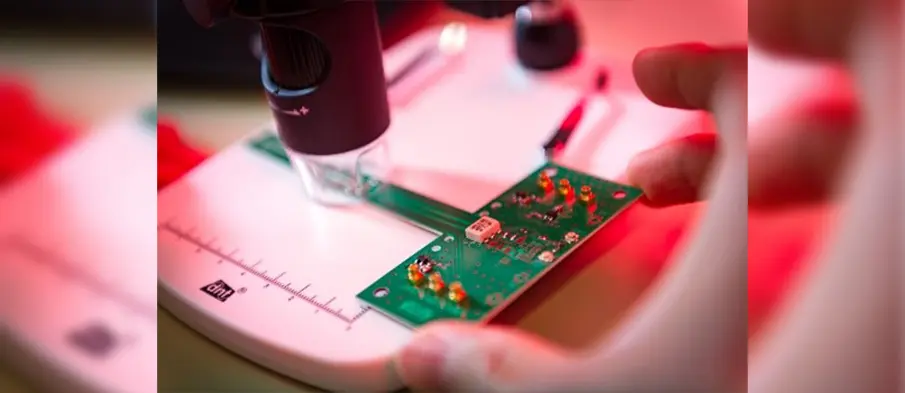India – For controlling prosthetics, the body’s signals must be detected to move the artificial limb. At the moment, implanting electrodes is the most common technique but this is invasive and electrodes can deteriorate or move position. A completely different approach is now developed by the multidisciplinary consortium QHMI in Stuttgart, Germany, using quantum sensors to detect the incredibly small and fast nerve signals. The ultrasensitive quantum magnetometers will be carried outside the body measuring the neural signals through the skin. At this stage, the scientists are using Spectrum Instrumentation’s ultrafast digitizers (M5i.3357) and Arbitrary Waveform Generators (M4x.6631) to characterize the signals and to finally design the required Application Specific Integrated Circuits (ASICs) and Photonic Integrated Circuits (PICs).

Quantum sensors on the skin instead of electrodes inside the body – the new aim for moving prosthetics
Prof. Dr. Jens Anders of the University of Stuttgart, who is in charge of the project ‘Cluster4Future QSens’ and a leading scientist of the QHMI consortium, explained, “This is one of the first real-world applications for quantum sensor probes as there is no other way to non-invasively detect such tiny magnetic changes that are in the order of 10 to 100 picoTeslas for muscles: that is six orders of magnitude smaller than the Earth’s magnetic field. Our tests show that our sensors are sensitive enough that they can detect neural signals to muscles through the skin. Even a small amount of remaining, say, lower arm muscle can in principle be used for this. We are working on even greater sensitivity for the femtoTesla magnetic changes we need to measure to detect signals within the brain without breaking the skin.”

Pic 2: A test PCB with custom integrated circuits and the quantum sensors
At the heart of this technology is an optically detected, magnetic resonance (ODMR) device made of a tiny slice of diamond. The diamond is doped with so-called nitrogen-vacancy centers (NV centers), which have a net electron spin and, therefore, behave like tiny bar magnets. When green laser light is shone on them, they produce a red fluorescence signal. By applying a suitable microwave magnetic field, this fluorescence signal is very sensitive to external magnetic fields, which can be used to measure neural signals with utmost precision.

Pic 3: Checking the ASICs on the test PCB with a microscope
The microwave magnetic fields required to control the NV center spins are generated using suitable coils driven by a microwave transmitter. The baseband signals for this transmitter are generated using an Arbitrary Waveform Generator (AWG) to provide the required phase and amplitude modulation of the carrier signal that make the excitation signal more robust against experimental nonidealities. The resulting fluorescence signals, which carry the information of the neural magnetic fields, is then captured by a photodiode, amplified, filtered and digitized for advanced signal processing.

The digitizer flagship M5i.3357 with 10 GS/s sampling rate and 12 bit resolution and the bestseller AWG M4x.6631 with 1.25 GS/s output rate and 16 bit resolution.
Spectrum’s cards were chosen by the team for several reasons. First, they have an extremely high dynamic range and good noise performance which is vital for such tiny signals. Second, they are very fast, so they can capture the fast signals associated with advanced pulsed excitation schemes, which can require bandwidth beyond 100 MHz. Third, they offered a great value in terms of performance / price. And lastly, the five-year warranty provides peace of mind that a critical component of the research is good for five years as it is almost impossible to obtain funding to replace a failed piece of equipment.
The quantum sensor probes are currently matchbox-sized and, in the future, will be around one cubic centimeter and go to a control box that is roughly the size of a large matchbox that houses the processing electronics and the battery. The aim is to use microelectronic and photonic integration to shrink the control box further and extend the battery life to give a day of use before recharging. It is hoped that prosthetics will start becoming available in three to four years.
Pictures 2 + 3: Copyright by University Stuttgart, Max Kovalenko





